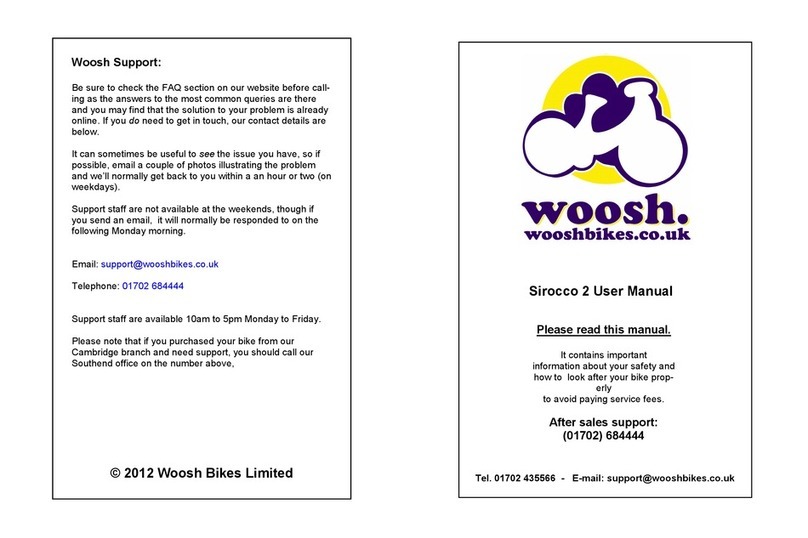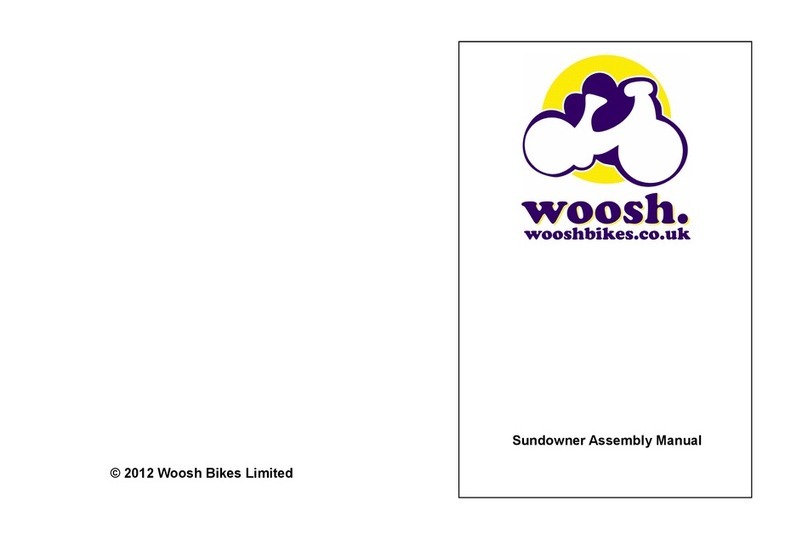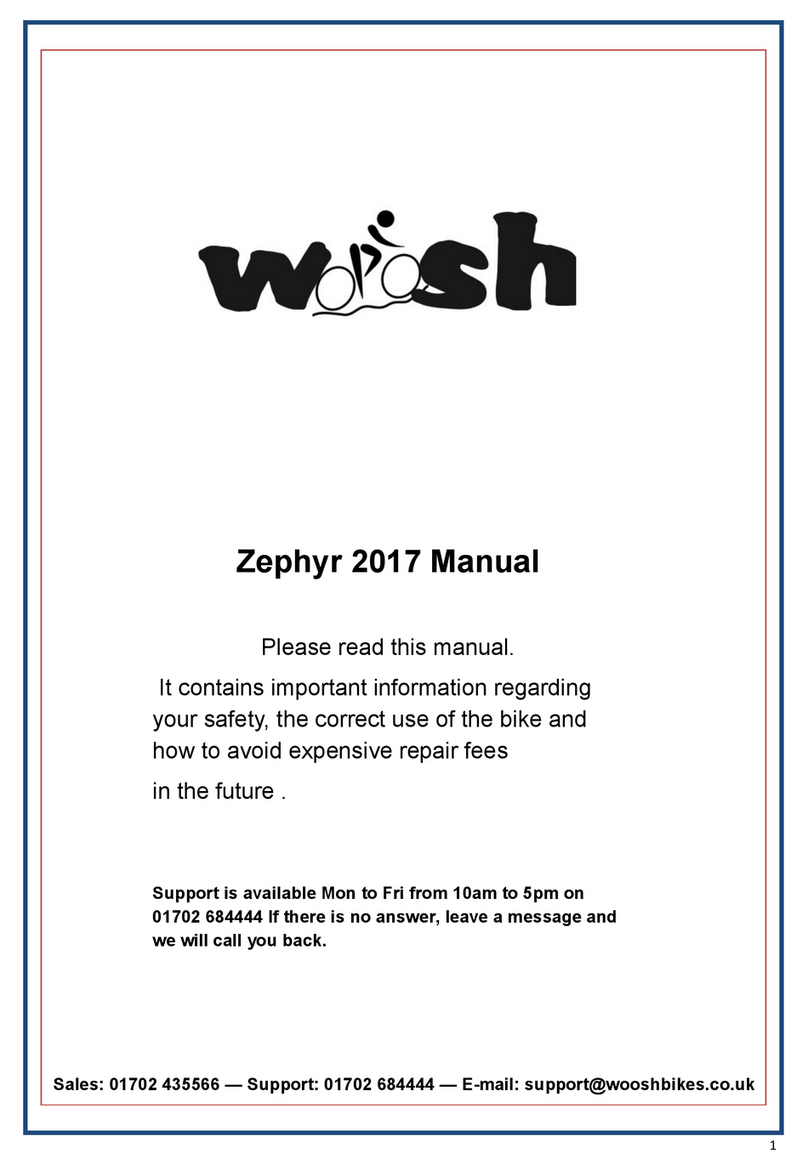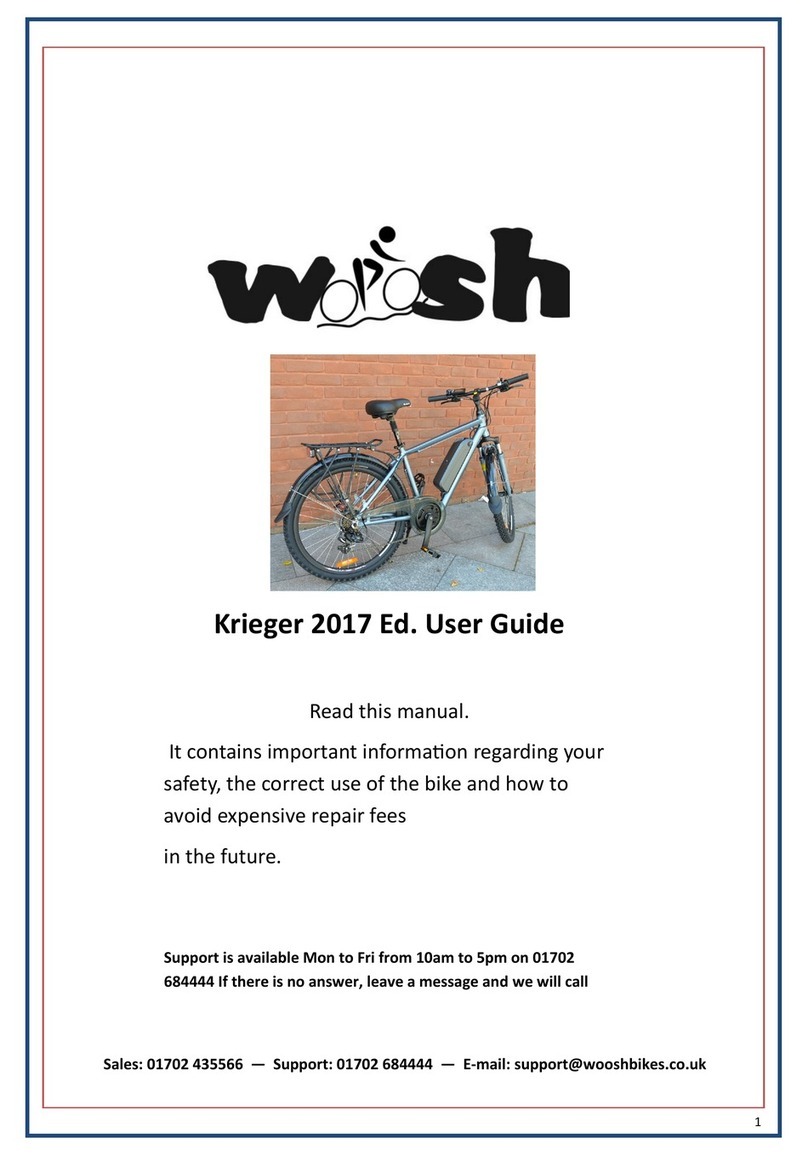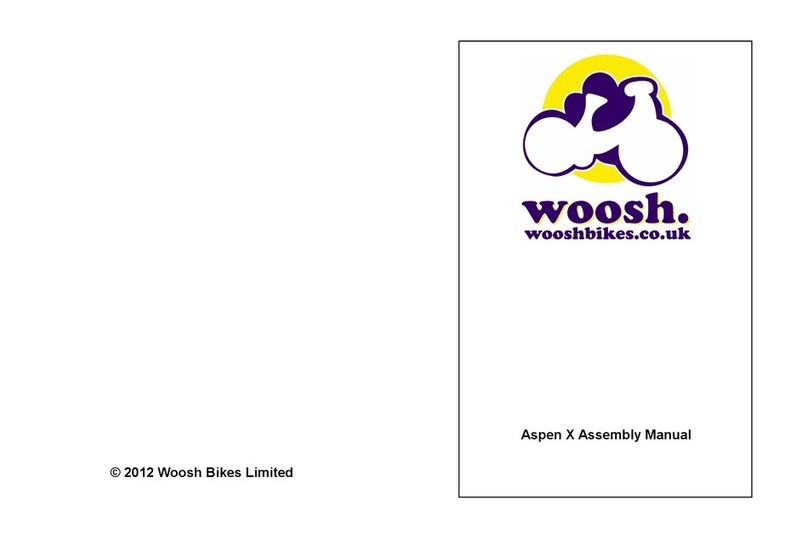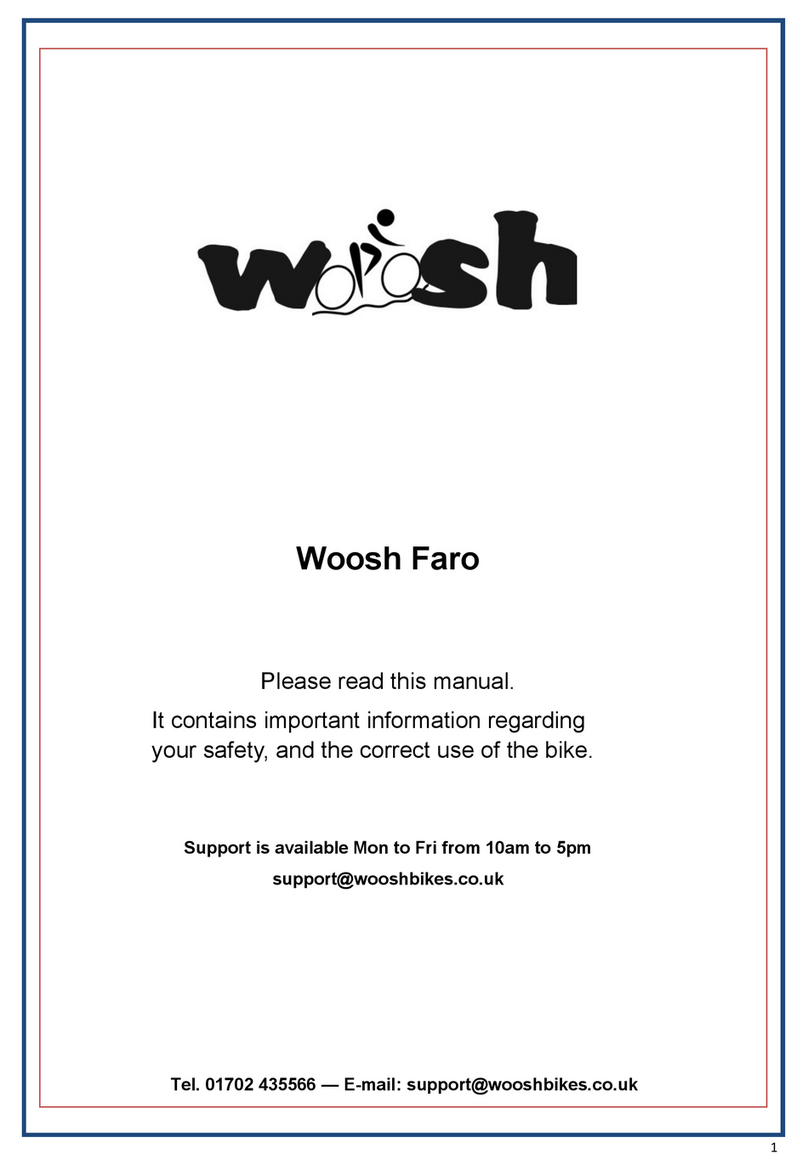
3
The Krieger from Woosh
he Krieger is a strong sturdy bike which can be used for commuting to and from work. It has a 15Ah bat-
tery which means that distances of up to 50-60 miles can be achieved on a single charge in ideal condi-
tions. If you rely heavily on the throttle and do not put much effort in yourself, then the battery will run
down more quickly and the distance able to be travelled on a single charge will be reduced accordingly.
he Krieger can be used on roads and cycle paths, it is not suitable for off-road use and should not be
used in competition events. It should not be used for jumping, stunting or aerobatic activities and should
not be ridden through deep puddles or fords. Incorrect use of your bike could result in injury and will void
your warranty.
You must be a minimum of 14 years of age to ride an electric cycle in the UK
he maximum weight including rider and luggage is 140kg (22 stone).
Before you ride your bike, and for your ongoing safety, familiarise yourself with the “user manual” and
the “maintenance manual”. here are many components on the Big Bear, and it is critical that they are
checked regularly and maintained where necessary. Details of how to maintain the various aspects of your
bike are included in the “maintenance manual”.
If you have any issues which are not covered by the manuals, it is likely that you would need to enlist the
help of a professional. Most people don’t have a complete set of tools for maintaining a bike, so things
like adjustments to the bottom bracket will need to be done by your local bike dealer. You should enlist
the help of your local dealer whenever something needs adjusting that you are not able to do yourself.
Your safety is paramount, so you must ensure that the bike is maintained in the correct manner, if in
doubt, consult your nearest bike dealer.





